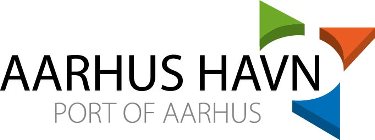It's not ‘just’ a system we're introducing. We're looking at all our processes.
Johanna Geber
Project Manager CRM, Aarhus Havn
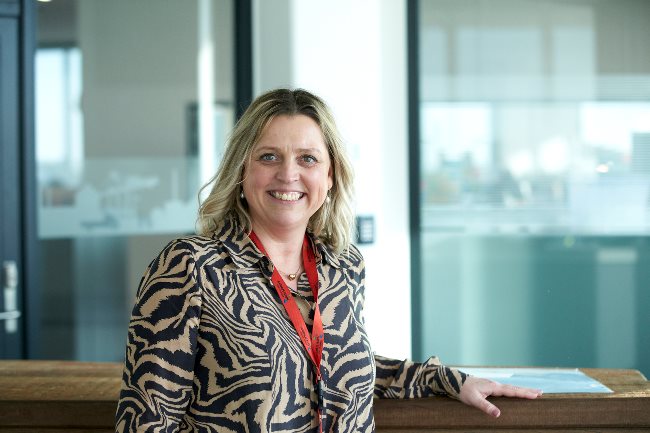
One container per minute, all days, weeks and months of the year
The Port of Aarhus, Denmark’s largest commercial port, is growing and its container traffic is breaking all records with a 25% increase in the past three years. The growing interest in using the Port of Aarhus means it needs to change the digital set-up. That is why digitisation is now a topic – along with sustainability – in the port’s five-year strategic plan, which has just been launched. NORRIQ has been selected as a sparring partner for a number of CRM-related processes.
Together with Project Manager Johanna Geber from the Port of Aarhus, we have gone up to the top floor of the impressive new headquarters on the east-facing pier. The iconic white building offers views of high stacks of thousands of containers, giant cranes, warehouses extending for hundreds of metres and a steady flow of trucks entering and exiting the area.
“We have a long-term development plan under which we want to extend the port area towards the east by an additional 100 hectares from the present approximately 280 hectares,” says Johanna Geber, underlining the impression that we are dealing with a business with huge development ambitions.
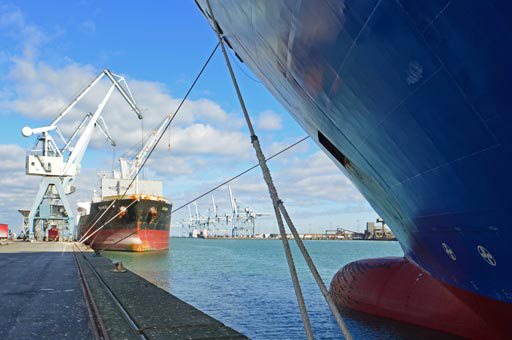
A port’s growth is generated together with its customers
This is why customer relations are essential in seizing the opportunities and making the most of them. After having implemented a BI solution, the port realised that there was also a need for a solution that could gather all customer data and provide a basis for more proactive market cultivation.
“We must continue our journey from being an ‘authority’ to becoming a service enterprise in close dialogue with our customers,” says Johanna Geber.
This can be a very long-term dialogue, which can be conducted at various levels of the organisation.
“It’s therefore important that we have a system for structuring and supporting our work.”
The Port of Aarhus started developing its CRM solution a couple of years ago and decided to implement the project in stages so that the organisation can keep up.
“It's not ‘just’ a system we're introducing. We're looking at all our processes,” says Johanna Geber.
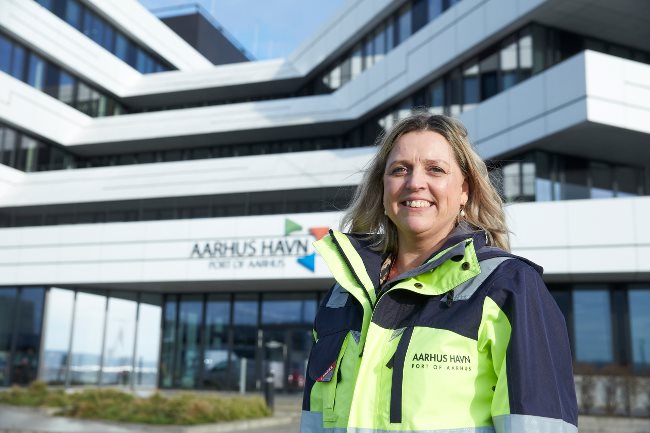
The objective is to become more efficient
A port’s sales process can easily take several years before an agreement has been landed with a new customer, which then begins to call at the port to load, store and unload cargo.
During the process, a volume of data is gathered by the various employees who deal with the customer. From being stored in Excel sheets and various mailboxes, all this data is now being gathered in the CRM solution.
“The objective is to become more efficient, and we can already see that we will achieve a huge rationalisation gain. At the same time, we will harmonise our processes, which is also crucial to us,” says Johanna Geber.
A third and also fairly essential gain is that the Port of Aarhus will move closer to its customers by making data available to anyone who has contact with customers.
“The next person who talks to a customer knows the previous history. This 360-degree approach to our customers enables us to make valuable decisions,” says Johanna Geber.
She adds that the organisation is much less vulnerable than before, where knowledge was more closely linked to individual employees.
“Now all the knowledge is embedded in the solution,” says Johanna Geber.
The CRM solution is cloud-based and can be accessed on tablets and phones.
“It makes it easy for everyone to see and enter data, and we’ve created a more flexible way of working and a better flow in our day-to-day work, where our employees always have the info they need at their fingertips,” says Johanne Geber.
No more slow processes and questionable data quality!
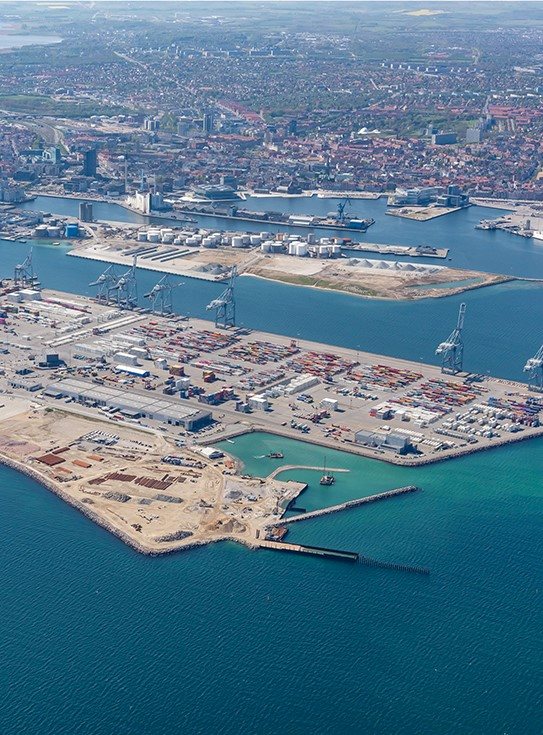
”We’re undergoing a process of digital transformation – a journey in which new requirements constantly arise and where we keep adding new elements. The next big ambition is a common portal on which we can share data with our customers and use data as a decision-making basis in our operation."
Johanna Geber
Project Manager CRM, Aarhus Havn
More proactive letting of areas
Whenever a customer leases premises in the port’s areas, a contract is drawn up, and it is planned as part of the CRM project that these contracts will be harmonised in the form of standard templates.
The contract management must be placed in the CRM solution, which can help generate more business, according to Johanna Geber.
“Having complete overview of the contracts in one place makes us better able to retain a customer who wants to lease an area because we have precise knowledge available about the overall lettings situation and about when a suitable area will become vacant,” says Johanna Geber.
Marketing Automation and event management
In the next stage of the project, the Port of Aarhus will also onboard a sub-solution that will enable it to take a more differentiated approach to email marketing.
“We’re looking forward to this, because we see some great opportunities in imparting relevant knowledge to groups of customers, compared with now, where we email one general newsletter,” says Johann Geber.
Management of waterfront events is another area that will be included in the CRM solution. It will make it easier to manage an event in relation to invitations and follow-up.
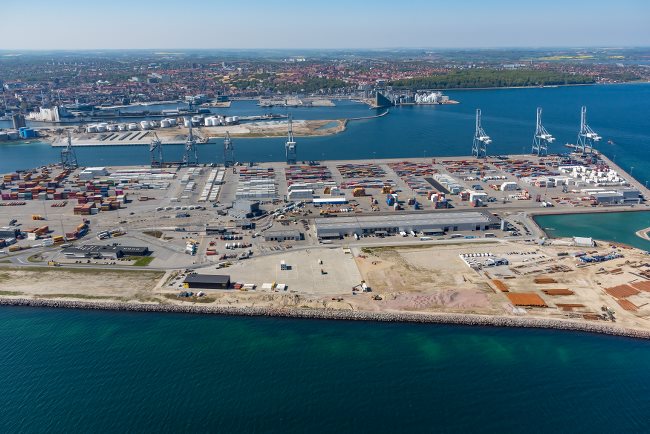
The chemistry is incredibly important
The Port of Aarhus wants to enter into long-term relations with its suppliers, and great importance is attached to having ‘the right chemistry’.
“Our suppliers must understand our business and the people behind it, and we want to establish close long-term relations with our suppliers,” says Johanna Geber.
“It’s also important that our suppliers add experience from other cases and give us feedback on our processes.”
“Our digital journey with NORRIQ has got off to a good start,” says Johanne Geber.
“We’re undergoing a process of digital transformation – a journey in which new requirements constantly arise and where we keep adding new elements. The next big ambition is a common portal on which we can share data with our customers and use data as a decision-making basis in our operations,” she says.
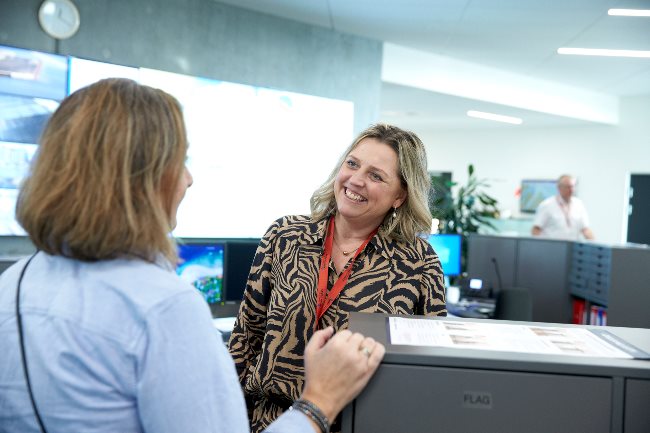
Facts on the Port of Aarhus
- The Port of Aarhus is Denmark’s largest commercial port with the biggest container terminal (approx. 65% market share) and the biggest public bulk turnover (approx. 66% market share) in Denmark.
- The EU has recognised the Port of Aarhus as a port of European importance, with the Port of Aarhus being one of only two Danish Ten-T Core Ports.
- The Port of Aarhus has a finely meshed route network with connections to most of the world. The world’s largest container ships call at the Port of Aarhus every week, and it is the only port in Denmark with this traffic.
- The Port of Aarhus is developing rapidly. The port is expected to be enlarged with ‘Yderhavnen’ (outer port) of 100 hectares – equal to about 35% of the current port area – in the years ahead.
- The Port of Aarhus is a municipal self-governing port with its own board, and the business functions as a financially independent entity without public subsidies.

